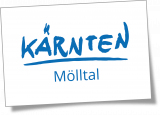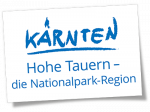Gold- und Bergbau
Auf den Pfaden vergangener Zeiten
Das “Tauerngold“, ein außergewöhnliches Edelmetall, das schon damals und bis heute eine Fülle von Mythen, Legenden und Spekulationen hervorgerufen hat. Ungeachtet der Mythen ist es eine Tatsache, dass schon viele Jahrhunderte vor Christus in den Hohen Tauern nach Edelmetallen gesucht wurde. Zahlreiche Funde und Überlieferungen belegen diese Tatsache bis heute. Jedoch war das Leben der Goldsucher in den Hohen Tauern äußerst beschwerlich und gefährlich, und letztendlich wurde die Suche nach Gold schlicht unrentabel. So endete schließlich der Goldrausch …
Geschichtsträchtiger Danielsberg
Eine 6.000 Jahre alte Kultstätte am Danielsberg belegt, dass bereits um 500 v. Chr. auf diesem 962 Meter hohen Berg nach Gold, Silber und Eisen geschürft wurde. Der Berg scheint förmlich dazu bestimmt zu sein, dass wir von seiner Geschichte erfahren, da er im Laufe der Zeit immer wieder Werkzeuge aus Stein freigegeben hat. Die Geschichte des Mölltales ist bis ins 18. Jahrhundert eng mit dem Bergbau verbunden. Experten sind sich sogar einig, dass bereits die illyrischen Veneter um 1.000 v. Chr. im Tauerngebiet nach Eisen suchten.
Pfarrkirche St. Martin – Jan van Scorel Altar
Gold, Silber und Eisen um 1480
Das älteste noch heute existierende Bergwerksverzeichnis in Obervellach belegt eindeutig, dass um das Jahr 1480 in der “Teuchl” Silberbergwerke vorhanden waren. Die Teuchl, ein Seitental in der Gemeinde Reißeck, ist heute vor allem für ihre malerischen Wanderwege bekannt. Zu jener Zeit des Bergbaus waren diese Unternehmungen aufgrund der alpinen Lage mit erheblichen Schwierigkeiten verbunden, wie es in den Aufzeichnungen festgehalten ist. Eine charmante Umschreibung für die Strapazen, denen die Bergleute in dieser abgelegenen und unwirtlichen Gegend ausgesetzt waren.
Das beschwerliche Leben der Knappen
Das harte Leben der Bergknappen war alles andere als einfach. Die Erzgruben, Silber- und Goldbergwerke, die oft in den Höhen des Mölltals verstreut waren, machten ihren Alltag zu einer mühsamen Herausforderung. Die Wege zu den Stollen und Arbeitsstätten waren steil und beschwerlich, besonders wenn schwere Ausrüstung befördert werden musste. Zu Beginn jeder Arbeitswoche mussten die Knappen ihre Verpflegung für sechs harte Tage selbst den Berg hinaufschleppen, um dann bis zu zwölf Stunden täglich unter Tage zu schuften.
Erfolg nicht lange von Dauer
Trotz des beträchtlichen Aufwands waren um 1535 bis zu 80 “Gewerke” in der Gegend der Teuchl registriert. Dies lässt jedoch nicht darüber hinwegtäuschen, dass der Bergbau in der Region keine langanhaltende Blütezeit erlebte. Aufgrund der hohen Kosten und der daraus resultierenden geringen Rentabilität begann ab 1600 der Niedergang des Bergbaus in der Teuchl. Vielmehr verlagerte sich dieser Schwerpunkt in den Berggerichtsbezirk Steinfeld im oberen Drautal. Die Überreste von Häusern, sogenannte Tagverhaue und Halden, können bis heute in der Teuchl besichtigt werden und sind stumme Zeugen dieser turbulenten Ära.





